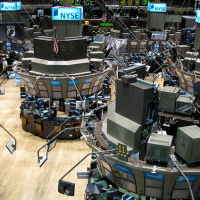“US stock futures turn red after jobs report.”
Thus read the top story on MarketWatch.com this morning. Simple enough, right? The economy didn’t add many jobs last month, so investors pulled back.
Oh wait…
The reality is that last month’s jobs report showed the US economy added more than twice as many jobs than most economists expected: 204,000 instead of the predicted 100,000. The unemployment rate is now down to 7.3%.
Under almost any conceivable circumstance, this would be great news. Many Americans have been struggling to find work for five years now…adding jobs should only mean the economy is improving.
But then why did investors react negatively to this report? The answer: Wall Street has become so dependent on quantitative easing (money-printing) that they don’t want unemployment any lower. From MarketWatch:
“The strong jobs report at first hammered stock futures, as traders bet the report could bring forward the timing for when the Federal Reserve will taper its bond-buying program that’s boosted equities.”
Since 2008, the Federal Reserve has printed money (called “quantitative easing”) in order to stimulate economic growth. By lowering interest rates in this way, they intended to encourage more spending and hopefully put more people back to work. But the stock market has become so dependent on this money-printing that it takes a hit whenever there is a sign that the economy is actually improving. This is because the Fed has repeatedly said they will end the money-printing once the economy is back on track (even Bernanke knows they can’t keep this up forever without causing serious problems). In sum, quantitative easing did not work.
What is most ironic, however, is that the increase in employment is itself the result of money-printing.
Since 2008, the Fed has been very serious about trying to lower unemployment. This is their mandate and the ultimate goal of quantitative easing. The fact that lower unemployment hurts the stock market means they have created a lose-lose situation whereby lowering unemployment creates a simultaneous collapse in stock prices. This is because they have kept up their money-printing too long and investors now have no way to know whether rising stock prices are founded on economic growth or simply propped up by inflation. In sum, the Fed has become its own worst enemy.
Adding jobs has become the stock market’s enemy. Needless to say, something is seriously wrong.
(The stock market actually didn’t open in the red, but talk of a December taper because of the new jobs report is making investors very nervous. Some even attributed this mornings rise to skepticism about the jobs report.)


No comments yet.